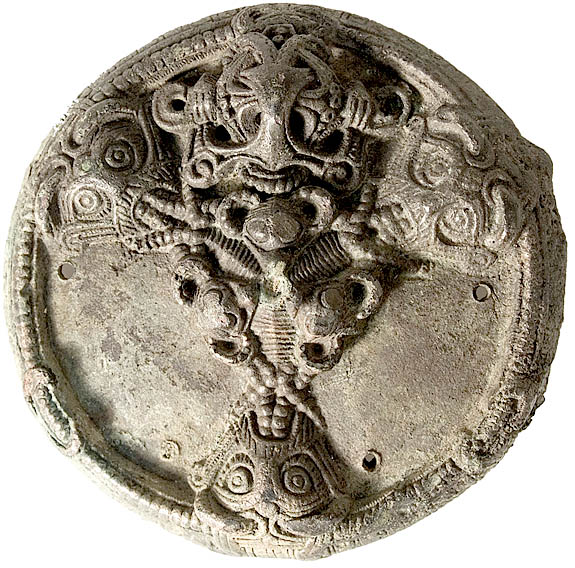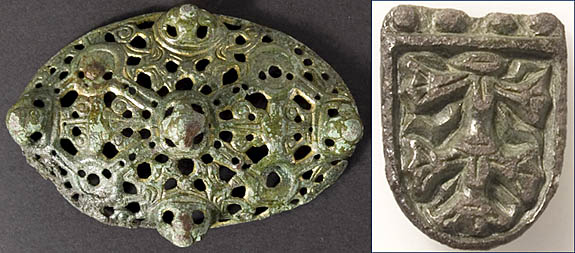Extravagant 1,300-year-old Viking jewelry uncovered at a farm site on the Danish island of Zealand has archeologists wondering if the modest agrarian settlement could have also been the home of nobility.
When scientists from the Roskilde Museum began excavation work at Vestervang, they uncovered 18 longhouses and 21 pit houses from the Late Iron Age (about 700 AD). What they didn’t expect to find in the rural countryside were items of elite jewelry — some gilded — that reflected less-than-humble residents.
According to a report in the Danish Journal of Archeology, the "most spectacular" jewelry item unearthed was a copper alloy pendant depicting a heart-shaped animal head with rounded ears and circular eyes.
"The neck is covered by a beadlike chain," wrote archaeologist Ole Thirup Kastholm. "Above the creature's forelegs, there are marked elbow joints and three-fingered paws or feet, which awkwardly grasp backwards to what might be hind legs or wings."
A second notable jewelry item found at Vestervang depicts a Christian cross that appears to have its origins in continental Europe sometime between 500 AD and 750 AD.
"The decoration consists of a central wheel cross in relief, with inlaid gold pressed into a waffle form,” wrote Kastholm. “The waffle gold is in some areas covered with transparent red glass or semiprecious stones, forming an equal-armed cross."
Kastholm said these jewelry items, and others found on the site, would have been worn by an elite class, so his challenge was to figure out how these items arrived on this “rather modest” farmstead in Zealand.
Kastholm believes the answer lies partly in the ancient town of Lejre (only 6 miles away), which had been the royal seat of the first Danish dynasty. Also, historical maps showed two villages near the site with "karleby" in their name. The term "karleby" is based on the Old English “ceorl,” referring to a member of the king's professional warrior escort.
Kasholm said the settlement of Veservang was likely controlled by a Lejre superior and given to warrior protectors of Lejre's ruler.
"This would explain the extraordinary character of the stray finds contrasting with the somewhat ordinary traces of settlement," Kastholm wrote.
Photos: Ole Kastholm/Roskilde Museum




No comments:
Post a Comment